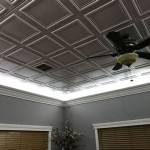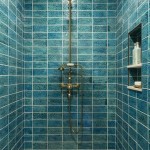How to Cover Bathroom Counter Tile
Bathroom counter tile can be a beautiful and durable surface, but over time, it may become outdated or simply no longer suit your aesthetic. If you're looking to transform your bathroom without the hassle of completely replacing the tile, covering it is a great option. There are various approaches you can take, each with its own pros and cons. This article will explore some of the most common methods for covering bathroom counter tile, offering a clear guide to help you choose the best solution for your needs.
Option 1: Paint
Painting bathroom counter tile is a relatively affordable and quick way to refresh its appearance. You can find tile paint specifically designed for bathroom environments, which is resistant to moisture and mildew. However, it's important to note that paint alone won't hide imperfections or unevenness in the tile. The surface should be thoroughly cleaned and any cracks or chips should be filled with caulk before painting.
When choosing paint, consider the level of gloss you desire. A high-gloss finish will be more durable but may amplify imperfections. A matte finish will hide flaws better but may be more prone to scratches. It's also important to select a color that complements the rest of the bathroom's decor.
Painting is a good option if you want a fresh and modern look, but it's not ideal for covering extensive damage or significant color changes. Furthermore, painting can be a delicate process, and if not done correctly, it can lead to a less than ideal result.
Option 2: Epoxy Countertop Coating
Epoxy countertop coatings are a popular choice for covering bathroom tile because they offer a durable and seamless finish. This liquid coating is applied in multiple layers and cures to form a hard, non-porous surface. Epoxy countertop coatings are available in a wide range of colors and can be customized to achieve a unique look.
A key advantage of epoxy coating is its resistance to moisture, stains, and scratches, making it suitable for high-traffic areas like bathrooms. However, applying epoxy coating requires experience and careful preparation. The tile surface must be thoroughly cleaned and sanded to ensure proper adhesion. Applying multiple layers to achieve the desired thickness can be time-consuming, and it's essential to allow proper drying time between each layer.
Epoxy coating is an excellent option for a durable and long-lasting finish, but it can be a demanding DIY project. For best results, it's often recommended to seek professional assistance.
Option 3: Tile Overlaying
Tile overlaying involves installing a new layer of tile over the existing tile. This method is a good choice if you want a more substantial change in appearance or need to address significant imperfections. However, it's essential to consider that overlaying tile will add thickness to the counter, which may affect the functionality of sinks or faucets.
There are two main approaches to tile overlaying: thinset and self-adhesive. Thinset overlaying utilizes a thin layer of mortar to adhere the new tile to the old, requiring more expertise and curing time. Self-adhesive tile is easier to install but may not be as durable as thinset. The choice between these two methods will depend on the specific circumstances and desired outcome.
Tile overlaying offers the most substantial change in appearance and can be a good choice for covering significant imperfections. However, it's important to consider potential complications, such as increased counter height or increased installation time and cost.
Option 4: Countertop Replacement
If you're looking for a complete makeover and don't want to deal with the complexities of covering tile, countertop replacement is a straightforward solution. This approach involves removing the existing countertop entirely and installing a new one, offering a wide range of materials and styles to choose from.
Countertop replacement can be more expensive than other options, but it provides the most flexibility in design and functionality. You can choose from various materials, such as granite, quartz, or laminate, and customize the edges and sink placement to fit your preferences. It's the most drastic solution but also the most versatile and generally results in a more polished finish.
Choosing the right approach for covering bathroom counter tile depends on several factors, including your budget, desired outcome, and level of DIY experience. By carefully considering the advantages and disadvantages of each option, you can make an informed decision and transform your bathroom into a space that you love.

How To Paint Tile Countertops And Our Modern Bathroom Reveal Bright Green Door

Turn Tile Counter Top Into Faux Sandstone Countertops Diy Counters

How To Paint Tile Countertops And Our Modern Bathroom Reveal Bright Green Door

How To Paint Tile Countertops And Our Modern Bathroom Reveal Bright Green Door

Ceramic Tile Bathroom Countertops

Full Bathroom Remodel Part 7 Tile Counter With Sink
11 Tile Counter Ideas For Kitchens And Baths

Tile Countertops For Bathrooms And Kitchens The Good Guys

Tile 101 How To Build Counters Kick Ass Or Die

How To Paint Tile Countertops And Our Modern Bathroom Reveal Bright Green Door
Related Posts







